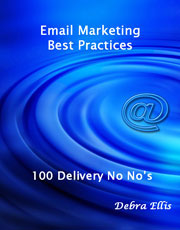My favorite items for this week include a call to action, social media platform comparison, integrated marketing example, and customer care callout.
Ecommerce
Today, instead of ecommerce, we have social media. Once again, established companies are in the best position to capitalize on the opportunity. They have verified followers and fans in their customer database. And, they already know what motivates them to buy.
If you had a retail store, would you send people away when they asked for more information about your products? Imagine how it would be: Someone enters the store and asks about the artisans that make your items. You tell her to go 30 miles northeast and she can meet the artist. She leaves, and then returns later that day with a question about the materials. You give her directions to the supplier.
Channel integration is a process. The first step is to identify your two strongest silo channels. They are the ones that need to be integrated first. (Remember the 80/20 rule?) Document the areas where lack of integration is a known problem. Create benchmarks before you start resolving issues.
If you treat your marketing channels as self sustaining islands, you miss the benefits of multichannel leverage. Channels work together to reduce buying resistance and increase motivation. Where the order is placed may not have anything to do with the motivation to buy.












